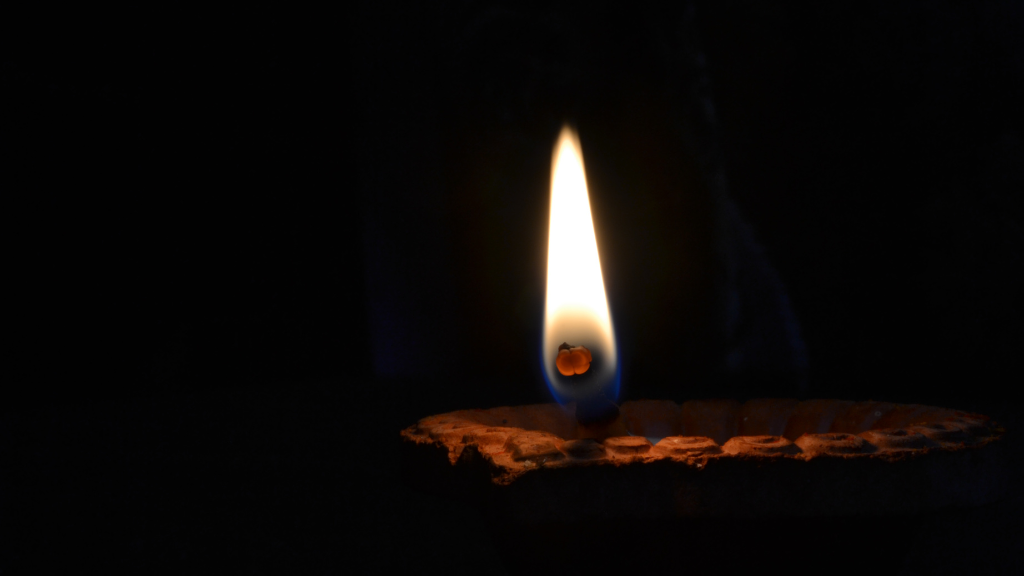9th of Av: Mourning the Destruction of the Temple
Tish’a B’Av for Hebrew Year 5783 begins at sundown on and ends at nightfall on .
In the second half of the first century, the Jews in the land of Israel rebelled against Roman rule. But Roman supremacy was great. Eventually, the Jewish insurgents entrenched themselves in Jerusalem, which was besieged by the Romans for three years. The term Jewish revolt suggests a certain unity, but nothing was further from the truth. Even in besieged Jerusalem, different Jewish factions also fought each other to the death. The city was finally taken by Roman general Titus, who would later become emperor.
Fire
Although Titus seems to have initially ordered that the temple be left unharmed, a fire did start in the temple, probably caused by a Roman legionnaire—whether it was deliberate is not clear. In no time, the temple was on fire. It happened on the afternoon of 9 Av, in the middle of summer. Throughout the next day, the temple continued to burn until it was completely destroyed. Other disastrous events in Jewish history are also associated with 9 Av, such as the destruction of the first temple in 586 BC and the decisive defeat in the second Jewish revolt in 135. Moreover, according to the Mishna (Jewish oral teaching), Emperor Hadrian had the temple square ploughed up (Jeremiah and Lamentations). In 1942, the deportation to Treblinka of Jews from the Warsaw ghetto also began on 9 Av.
Exile
Although more Jews had lived outside than in Israel for centuries, the destruction of Jerusalem and the temple in 70 nevertheless marked in Jewish consciousness the beginning of a new exile, or a new phase of exile, namely, the Roman exile. Moreover, the temple had been the central religious institution of Judaism to which all Jewish life was oriented. Now that there was no more temple, Judaism had to reinvent itself, so to speak. The only groups that already had the infrastructure for this were the Pharisees and the Jewish Christians.
The Talmud relates that when the fall of Jerusalem seemed inevitable, Rabbi Yochanan ben Zakkai, the leading Pharisee, had himself smuggled out of the besieged city in a coffin. Roman soldiers brought him to Titus. Rabbi Jochanan prophesied to him that he (Titus) would become emperor, which happened a short time later. In gratitude, he complied with Jochanan’s request: “Give me Yavne and its students.” The study house in Yavne (also called Yamnia) became the new centre where, from the traditions of the Pharisees, rabbinic Judaism was further developed. This Judaism would become normative for Israel in the centuries to come and until today—as Jesus had also announced in Matthew 23:2-3: “The scribes and the Pharisees have seated themselves in the chair of Moses; therefore, all that they tell you, do and observe.”
Several attempts to rebuild the temple came later, but they all came to nothing. The last was in 365 AD under emperor Julian the Apostate. He had allowed the Jews to do so, while his immediate predecessors had begun to Christianise Jerusalem by building all kinds of churches. Unfortunately, a natural underground gas explosion soon put an end to the work that had only just begun. Under later Christian emperors, Jews were admitted to the Temple Mount only for 9 Av, the day of mourning for the destruction of the temple, where a church now stood.
Observance
9 Av, in Hebrew Tisha be-Av, is a complete day of fasting. That means no eating or drinking from sunset to sunset, no washing, no wearing leather shoes and no sexual intercourse. No Torah is even taught. It is a day of mourning—one sits on the ground or on low benches. During the morning service, the tallit (prayer shawl) is not worn. One does not do that again until the afternoon.
The Book of Lamentations is read on this day. It poignantly sings of the downfall of the city and the first temple:
How lonely sits the city
that was full of people!
She has become like a widow
Who was once great among the nations!
She who was a princess among the provinces
Has become a forced labourer!
The mourning period actually begins three weeks earlier, on 17 Tammuz, the day a breach was made in the city wall and does not end until 10 Av in the afternoon. The prophets’ readings of the three Sabbaths between 17 Tammuz and 9 Av announce the judgement of Israel’s sin and idolatry. This is how it was at the time of the first temple.
The real reason for the fall of the second temple, according to Jewish tradition, was the people’s internal divisions, selfishness and hatred of the people’s fellow man. But after 9 Av, then, words of consolation may sound: “Comfort, comfort My people”. These words from Isaiah 40 herald four Sabbaths of consolation.





